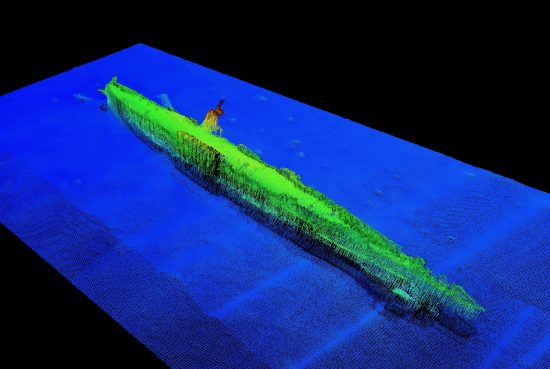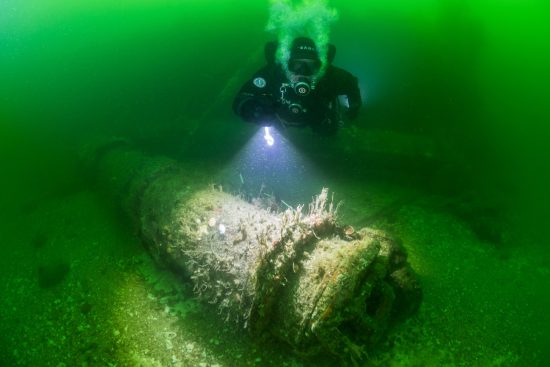







Up until the end of World War I, UC 71 carried out a total of 19 enemy patrols under five commanders, while sinking 61 civilian ships, including the well-known English U-boat trap HMS Dunraven.
After the German capitulation, the ship was to be delivered to the Allies. During transit to England, it sank on the 20th February 1919, immediately adjacent to the southern entrance to the North Sea island of Heligoland. In a telegram sent by the captain, dated 26th February, the bad weather and high waves were the cause of the sinking.
Almost 100 years later, extensive photo and video documentation was carried out by Submaris, a research diving company, to record the state of its conservation. The remaining thickness of the outer and pressure hull was determined using an ultrasonic thickness gauge. The underwater archaeological investigations also revealed that the submarine was obviously scuttled. During
the first dives in 2001, it was possible to established that only the tower hatch was tightly locked, the remaining two hatches on the upper deck were open.
In 2014, all the doors and bulkheads were found open during documentation of the ship's interior. The telegram of the 26th of February, on the other hand, says that all the hatches and bulkheads had been closed. This clearly shows that this was a deliberate scuttling, which was hushed up on the pretext of bad weather. The diary of Georg Trinks, which appeared just recently, confirms the scuttling. Trinks was the 4th engineer on board the ship and reports impressive and very personally about daily life on board UC 71. His diary ends with the important sentence: “Kein Engländer sollte das Boot betreten, so war der Wille der Mannschaft, und sie hat es erreicht”, “No Englishman should step on the boat, that was the will of the crew and they achieved it".
The 4.10 metre long, almost 200 kg heavy net cutter of the UC 71 was recovered in the summer of 2016 using lifting bags and an electric winch and then brought to the State Museum at Schloss Gottorf in Schleswig, Germany, for conservation. A net cutter was supposed to cut submarine nets, which hung like curtains in the Strait of Dover, as well as in all the English river mouths and port entrances. The nets, often including mines, were supposed to be directed or driven away from the sub by means of two steel cables attached to the end of the saw running in parallel from the bow over the tower to the end of the stern. Sometimes the net cutter would be supported by a second, directly welded saw tooth below the bow.
The fate of UC 71 and the naval war of 1914-1918 will be shown soon in a virtual exhibition including the net cutter, the recently rediscovered diary of the fourth machinist of the UC 71, Georg Trinks, as well as footage and further explanations.
 Submaris
Submaris 26th May 2020
26th May 2020